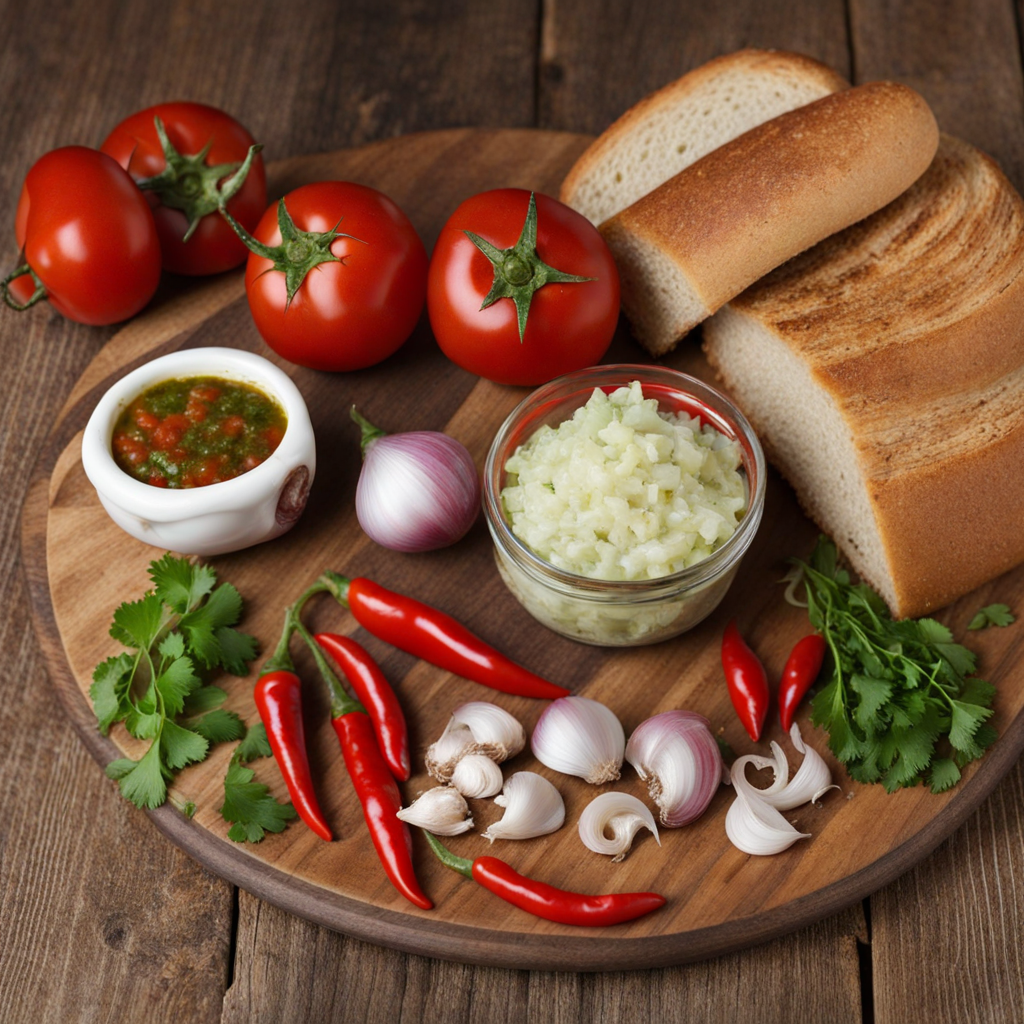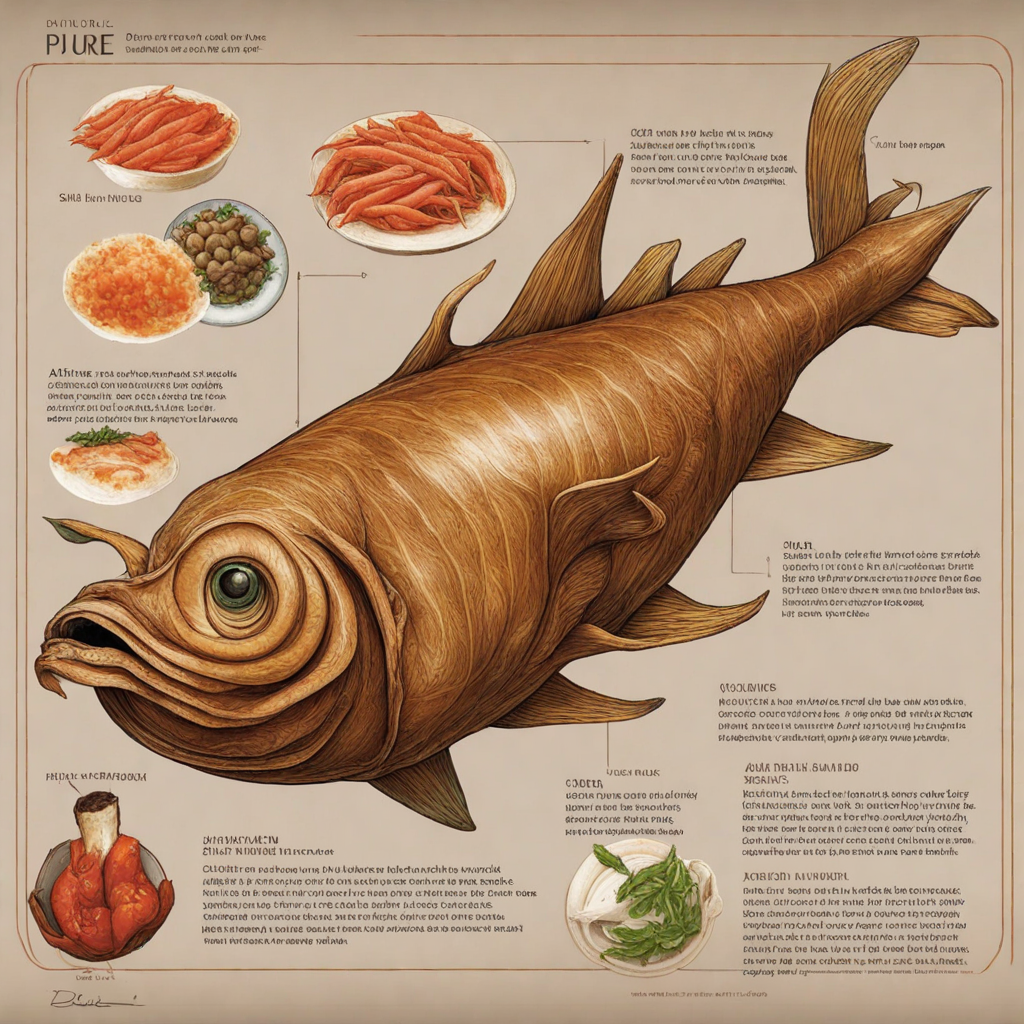Pebre
Pebre is a vibrant and zesty Chilean condiment that embodies the spirit of the country’s culinary culture. At its core, Pebre is a harmonious blend of fresh ingredients, primarily consisting of finely chopped tomatoes, onions, and cilantro. The addition of green chili peppers adds a delightful kick, while lime juice and olive oil provide a refreshing acidity and richness. This colorful mixture not only brightens up any dish but also showcases the fresh produce that Chile is renowned for, making it a staple in Chilean households and restaurants alike. Pebre serves as a versatile accompaniment to many traditional Chilean foods, enhancing flavors and adding an exciting layer of complexity. It is commonly served alongside grilled meats, such as the famous Asado, and pairs beautifully with crusty bread, empanadas, or even as a topping for roasted potatoes. The burst of flavors from the fresh herbs and spices elevates the dining experience, making every bite a celebration of Chilean culinary traditions. What sets Pebre apart is its regional variations, which can include ingredients like garlic, bell peppers, or even avocado, reflecting local tastes and preferences. This adaptability makes Pebre not just a condiment, but a canvas for creativity, allowing food lovers to experiment and personalize their recipes. Whether enjoyed as a dip, a topping, or a marinade, Pebre invites anyone seeking to explore new flavors into the heart of Chilean cuisine, offering a taste that is both refreshing and unforgettable.
How It Became This Dish
The Flavorful Journey of Pebre: A Culinary Staple of Chile In the heart of Chilean cuisine lies a condiment that embodies the spirit of the nation: Pebre. This vibrant and zesty mixture, traditionally composed of finely chopped cilantro, onions, tomatoes, garlic, and a splash of chili pepper, encapsulates the rich agricultural bounty of Chile while reflecting the diverse cultural influences that have shaped its culinary landscape. Understanding the origins, cultural significance, and evolution of Pebre offers a window into the essence of Chilean identity. #### Origins: A Fusion of Influences The roots of Pebre can be traced back to the pre-Columbian era, long before the Spanish colonization in the 16th century. Indigenous peoples, such as the Mapuche, utilized local herbs, vegetables, and spices to create flavor-enhancing condiments, serving as the foundation for what would later evolve into Pebre. The Mapuche's deep connection to the land and their knowledge of local flora contributed to the rich tapestry of flavors that would define Chilean cuisine. With the arrival of Spanish colonizers, new ingredients were introduced, including European herbs and spices, which married with indigenous flavors. The combination of old and new culinary practices resulted in a unique fusion that is a hallmark of Chilean gastronomy. The adaptation of ingredients such as garlic, onions, and tomatoes was pivotal in the development of Pebre, as these components became staples in the Chilean diet. By the 19th century, Pebre began to gain recognition as a distinct condiment. It was not merely a side dish but rather a reflection of the Chilean way of life—sociable, vibrant, and full of flavor. The name "Pebre" itself is thought to derive from the Spanish word “pimienta,” meaning pepper, indicating the importance of spice in this beloved condiment. #### Cultural Significance: More Than Just a Condiment Pebre occupies a special place in Chilean culture, serving as a symbol of national identity. It is often found accompanying traditional dishes such as empanadas, asado (barbecue), and pastel de choclo (corn pie). Its presence at the table evokes a sense of community and celebration, making it a staple at family gatherings, festivals, and national holidays. Chilean gastronomy is characterized by its regional diversity, and Pebre is no exception. Variations exist across the country, influenced by local ingredients and culinary traditions. In the northern regions, Pebre may incorporate ingredients like avocado or even seafood, while in the south, it might feature stronger herbs and spicier peppers. This adaptability highlights not only the versatility of the condiment but also the rich cultural tapestry of Chile, where each region proudly presents its unique interpretation of Pebre. The condiment also plays a role in Chile’s social fabric. It is a common feature at asados, where families and friends gather to grill meats outdoors. The act of preparing and sharing Pebre becomes a communal experience, fostering connections among those gathered. Thus, Pebre transcends its role as just a flavor enhancer; it embodies the warmth of Chilean hospitality and the joy of shared meals. #### Development Over Time: A Culinary Evolution As Chile moved through the 20th century, Pebre continued to evolve, reflecting changes in society and gastronomy. The urbanization and migration patterns of the mid-20th century brought new influences and ingredients into Chilean kitchens. This period saw the rise of more sophisticated culinary techniques and the integration of international cuisines, which, in turn, influenced the making and presentation of Pebre. Chilean chefs began to experiment with Pebre, elevating it from a rustic condiment to a more gourmet offering. In contemporary restaurants, Pebre is often presented with artistic flair and new ingredients, including exotic spices or fruits, showcasing its versatility and adaptability. Chefs have taken Pebre to new heights, pairing it with modern dishes and global flavors while maintaining its traditional roots. Moreover, the global interest in Chilean cuisine has surged in recent years, with Pebre becoming a symbol of this culinary renaissance. As Chilean restaurants and chefs gain international recognition, Pebre is often highlighted as a quintessential element of the country’s culinary identity. Food enthusiasts around the world are beginning to appreciate not only the flavor but also the cultural narrative of this condiment. In addition to its culinary evolution, Pebre has also entered the realm of cultural preservation. Various organizations and culinary advocates are working to promote traditional Chilean recipes and ingredients, ensuring that Pebre remains a beloved part of the national identity. This movement emphasizes the importance of maintaining culinary heritage while embracing innovation, striking a balance between tradition and modernity. #### Conclusion: A Flavorful Legacy In essence, Pebre is not just a condiment; it is a culinary narrative woven into the fabric of Chilean life. Its origins reflect a fusion of indigenous and Spanish influences, while its cultural significance highlights the importance of community and shared experiences. Over time, Pebre has evolved, adapting to the changing landscape of Chilean society and cuisine, yet it remains steadfast in its role as a beloved staple. As Chile continues to embrace its culinary heritage while exploring new horizons, Pebre stands as a testament to the country’s rich flavors and vibrant culture. Whether served alongside a traditional asado, included in a gourmet dish, or enjoyed in a simple meal at home, Pebre represents the heart of Chilean cuisine—a fusion of history, culture, and flavor that invites all to partake in its delicious journey.
You may like
Discover local flavors from Chile







